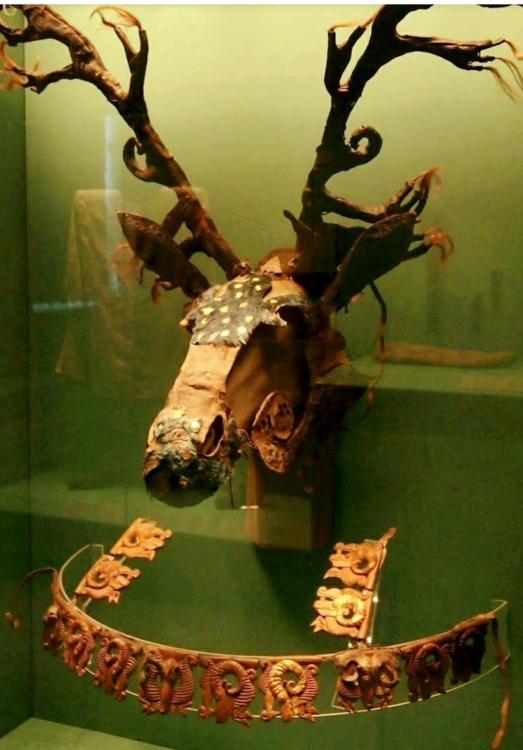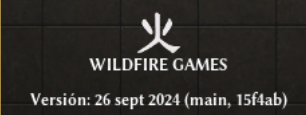-
Posts
25.684 -
Joined
-
Days Won
300
Everything posted by Lion.Kanzen
-
.thumb.png.ce58cea22940c255f5b0a735d5abee36.png)
Poll: Should shipwrecks be gatherable only by merchantmen?
Lion.Kanzen replied to Gurken Khan's topic in Gameplay Discussion
This. Include other ships. -
.thumb.png.ce58cea22940c255f5b0a735d5abee36.png)
Hero Death Notification
Lion.Kanzen replied to Vantha's topic in Game Development & Technical Discussion
That won't always be the case. -
-
.thumb.png.ce58cea22940c255f5b0a735d5abee36.png)
Crash to start the match (Nighly Build SVN)
Lion.Kanzen replied to Lion.Kanzen's topic in Bug reports
The crash is fixed. -
.thumb.png.ce58cea22940c255f5b0a735d5abee36.png)
Hero Death Notification
Lion.Kanzen replied to Vantha's topic in Game Development & Technical Discussion
It's not the same as having a professional voice. While now having a professional voice may involve using AI. -
.thumb.png.ce58cea22940c255f5b0a735d5abee36.png)
Hero Death Notification
Lion.Kanzen replied to Vantha's topic in Game Development & Technical Discussion
The first versions are easy to launch, you only need English, French, Spanish, Portuguese and Italian. Then the problem is Asia and the rest of Europe. -
.thumb.png.ce58cea22940c255f5b0a735d5abee36.png)
Hero Death Notification
Lion.Kanzen replied to Vantha's topic in Game Development & Technical Discussion
The problem with VO , you will need multi language. I'll prefer a lament from beyond the grave. -
.thumb.png.ce58cea22940c255f5b0a735d5abee36.png)
Modern vs Older RTS Discuss
Lion.Kanzen replied to Lion.Kanzen's topic in Introductions & Off-Topic Discussion
How interesting the concept of RPG hero in RTS. -
.thumb.png.ce58cea22940c255f5b0a735d5abee36.png)
Narrative Campaign General Discussion?
Lion.Kanzen replied to Lion.Kanzen's topic in Gameplay Discussion
On the other hand you have something guided in AoE4. -
.thumb.png.ce58cea22940c255f5b0a735d5abee36.png)
Narrative Campaign General Discussion?
Lion.Kanzen replied to Lion.Kanzen's topic in Gameplay Discussion
Yes, I think so, that's why I say that the combat can be more free and with some interesting difficulty. You must think that it should be more entertaining than the current tutorial, in fact AoM does not have an intense tutorial and has a good story. The first map is simple. https://ageofempires.fandom.com/wiki/Omens Here is a link with details of this map. -
.thumb.png.ce58cea22940c255f5b0a735d5abee36.png)
Hero Death Notification
Lion.Kanzen replied to Vantha's topic in Game Development & Technical Discussion
I like the sound but I'm not sure if it's for this. But it is interesting for sound in combat. -
.thumb.png.ce58cea22940c255f5b0a735d5abee36.png)
Crash to start the match (Nighly Build SVN)
Lion.Kanzen replied to Lion.Kanzen's topic in Bug reports
That change that causes the crash, is it some improvement to Pathfinder? -
.thumb.png.ce58cea22940c255f5b0a735d5abee36.png)
Narrative Campaign General Discussion?
Lion.Kanzen replied to Lion.Kanzen's topic in Gameplay Discussion
We must ask what kind of tutorial campaign we want, whether a campaign with many scenarios to test or just a few. In the case of few it would mean that we should leave the learning scenarios in some campaigns. What would be the difference? The difference would be how intense we want the learning to be and how long the tutorial campaign would be. A (Intense) B (more free will) more relaxed learning and with greater freedom. Note: you can make a mix and have a little of both techniques. -
.thumb.png.ce58cea22940c255f5b0a735d5abee36.png)
Crash to start the match (Nighly Build SVN)
Lion.Kanzen replied to Lion.Kanzen's topic in Bug reports
Thank You -
.thumb.png.ce58cea22940c255f5b0a735d5abee36.png)
Crash to start the match (Nighly Build SVN)
Lion.Kanzen replied to Lion.Kanzen's topic in Bug reports
That's why I didn't understand why the Build had an old date and I asked you if auto builds still exist. -
.thumb.png.ce58cea22940c255f5b0a735d5abee36.png)
Crash to start the match (Nighly Build SVN)
Lion.Kanzen replied to Lion.Kanzen's topic in Bug reports
Stan, I find it strange that the last build I have to update is from September. Nightly SVN -
-
These bots are getting worse and worse. EDIT: Removed the image, no use to give them more visibility than they need to.
-
.thumb.png.ce58cea22940c255f5b0a735d5abee36.png)
Age of Empires III DE.
Lion.Kanzen replied to Lion.Kanzen's topic in Introductions & Off-Topic Discussion
The AoE III community is very upset, They complain that AoE III DE is not receiving new content. And they should let the game die. This is due to the delay of the new DLC and they complain that all the attention AoE II is getting. By the way, I really like the content of this Youtuber El caballero Rosa (The Pink Knight), It's the one that gave me the idea that new RTS games need more single player content. They say that the AoE III DE It's a game with little audience And it takes a long time to find ranked games. -
Actualizado el nuevo enlace. https://svn.wildfiregames.com/nightly-build/trunk I will update the entire post later.
-
.thumb.png.ce58cea22940c255f5b0a735d5abee36.png)
How-To download and checkout 0 A.D. SVN on Windows
Lion.Kanzen replied to nebkas's topic in General Discussion
This information needs to be updated. The current link to the updated SVN is the following: https://svn.wildfiregames.com/nightly-build/trunk -
https://wildfiregames.com/forum/forum/297-1000-ad/ @Gerrit you can check here our mod. We have Carolingians as Germans and Nordics and Saxons as Germanic people.
-
We have a middle ages mod. Official mod, which means it is developed by us. The first Germans you will see are: Cimbrians, Teutons and Suebians.







